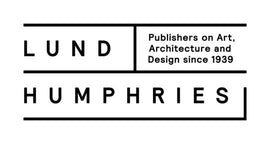Design for the Corporate World : Claiming Room for Creativity - by Wim de Wit
Design for the Corporate World, 1950-1975 looks at the relationship between designers -- including household names such as Charles and Ray Eames, Eero Saarinen, and Eliot Noyes -- and the companies who employed them, highlighting the political, social and cultural circumstances in which seminal design icons such as the Selectric Typewriter for IBM and the distinctive Westinghouse Electric Manufacturing Company logo were created.
Architectural, industrial, and graphic design in the United States from the 1950s through to the 1970s (generally known as mid-century modern) is now perceived as a golden era, but this book reveals why designers felt ambivalent about their work for these large businesses, shedding new light on the changing self-image of the designer and on these famous mid-century graphic, product, and furniture designs.
Below is a teaser from the first chapter of the book, written by Wim de Wit ...
"The eleventh annual gathering of the International Design Conference in Aspen (IDCA) in summer 1961 was much less upbeat in tone than the preceding ten meetings had been. Taken as a whole, the message conveyed by most of the speeches was quite dark, not so much about the current state of design, but about the dangerous world in which people felt they were living at the time. It is as if they were not particularly interested in talking about design. Conferees had to wait until the last day to hear even a single speaker make a significant point about the designer’s role in the post- World War II economy and in particular about the pervasive fear of selling out to commerce. As we will see, world politics and questions of professional ethics were always on the designers’ minds in the post- World War II era.
Paul Rand, “Herodotus on freedom of discussion.”
Advertisement for the Container Corporation of America,
“Great Ideas of Western Man” series, 1950–1.
"IDCA’s “Man/Problem Solver” conference opened on Sunday, June 18, 1961, with a keynote address by Dr. Harold A. Taylor, a prolific writer on education and former president of Sarah Lawrence College (1945–59) who, during the McCarthy era, had distinguished himself through his support for members of the college’s faculty accused of anti-American activities. In his 1961 Aspen lecture, Taylor told his audience, “The problem at the center of all other problems is war and peace,” and he proceeded to speak out against the danger of nuclear war and mass destruction. He added: “The world’s problem is now ours, and unless we take the lead in solving it creatively, there will be no more problems to solve.” Taylor was not the only one to express such concerns. Anatol Rapoport, a Russian-American professor of Mathematical Biology at the University of Michigan in Ann Arbor, declared that the governments of the United States and the Soviet Union were apparently unable to solve urgent, large-scale problems in the world – the problem of hunger, for example – because government functionaries were trained only in strategic thinking and therefore unprepared to tackle the complex issues that demanded engagement at the higher, more demanding level of creative thinking. On a related note, the architect and social critic Bernard Rudofsky provoked his audience in characteristic fashion by asking if most humans would actually be able to recognize a problem if they saw one, and by making such outrageous statements as “any country without eroded soil and steaming dumps, without polluted rivers and polluted air we refer to, pityingly, as an underdeveloped country.” Finally, on the last day of the conference, during the closing discussion, it was Bernard S. Benson, a British-American inventor and engineer working in the aviation industry, who refocused the debate on what was undoubtedly a core issue for the conferees when he observed, “The dilemma of the designer these days is ‘How can I have my cake and eat it?’ Though he may not want to admit it, he is really saying to himself ‘Do I want to be honest but broke, or do I want to prostitute myself and be loaded?’” With these stark sentences, he verbalized a dilemma that had been taking shape for years in the worlds of industrial and graphic design, but that had never been expressed so bluntly by speakers or participants at the IDCA – even if it was constantly on their minds."
You can find the book, edited by Wim de Wit, on our website HERE.
You may also enjoy reading THIS.



